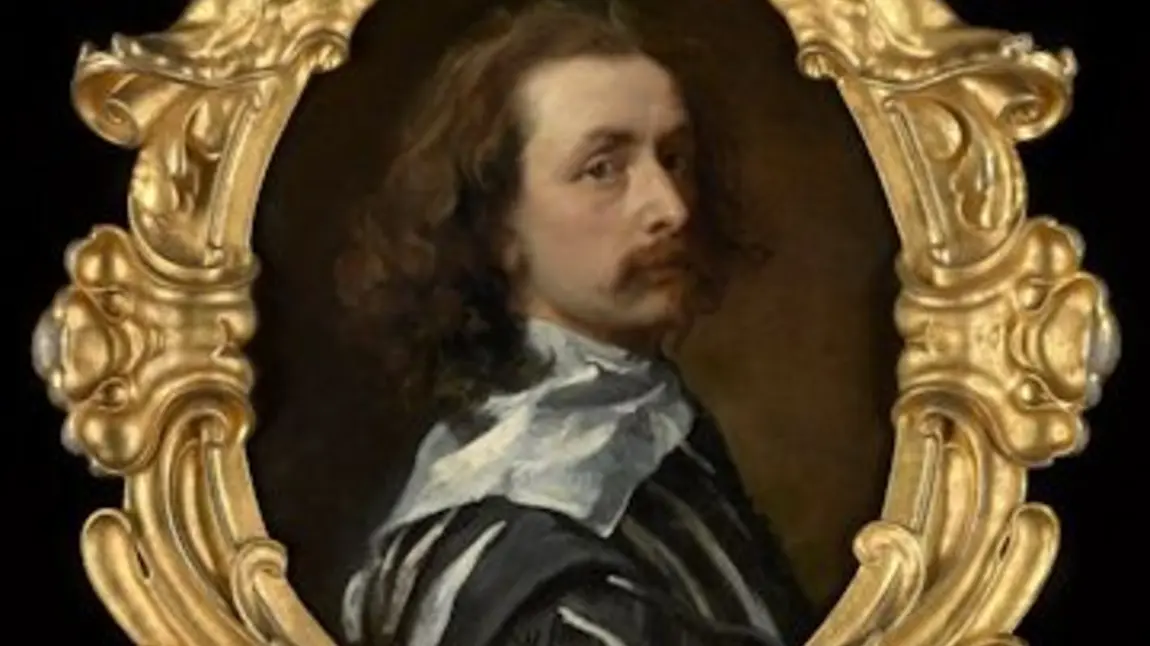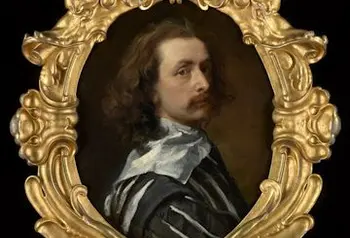Grant helps to save Van Dyck's last self-portrait

The National Portrait Gallery and Art Fund’s fundraising campaign to help the gallery acquire Van Dyck’s last self-portrait (1640-1) has been successful thanks to a major grant of £6,343,500 from the Heritage Lottery Fund (HLF). This substantial support follows the success of a public appeal involving 10,000 individuals donating over £1.44m in addition to £1.2m from two generous private trusts and £1.35m from the Art Fund and National Portrait Gallery’s funds. In total, £10m has been raised to purchase the portrait, and a further £343,000 to support a national tour of the painting (including £150,000 from the Art Fund). The extraordinary generosity of so many individuals and trusts makes this one of the most successful campaigns for a work of art of the last hundred years.
The portrait will remain on display at the gallery until 31 August before research and conservation work are undertaken. The painting will embark on a nationwide tour to six museums and galleries from January 2015.
The Save Van Dyck campaign originally needed to raise £12.5m to prevent the work from going overseas, but once the application for an export licence was withdrawn in March 2014, and a revised price of £10m was agreed, there was an improved chance of ensuring that the portrait remained on public display forever.
The portrait will embark on a three-year nationwide tour starting at Turner Contemporary, Margate before going on to Manchester Art Gallery, Dulwich Picture Gallery, Birmingham Museum & Art Gallery, Laing Art Gallery, Newcastle-upon-Tyne and The Scottish National Portrait Gallery, Edinburgh.
Dame Jenny Abramsky, Chair of the Heritage Lottery Fund, says: "This Van Dyck self-portrait is very special. It nearly left these shores forever and I’d like to congratulate the National Portrait Gallery and the Art Fund for their tenacity in running such a successful fundraising campaign over the past six months. It’s a superb painting marking the turning-point in the history of portraiture, and as such I’m proud that the Heritage Lottery Fund has been able to dig deep and make an investment of £6.3m in order to help secure it for the nation."
Sandy Nairne, Director of the National Portrait Gallery, London, says: "The Van Dyck self-portrait is a poignant portrait of great significance. We are hugely grateful to the Heritage Lottery Fund, and for all the public support for this entrancing work."
Stephen Deuchar, Director of the Art Fund, says: "The campaign to save this remarkable painting has stirred up astonishing public support with some 10,000 individuals donating over £1.4m to the cause – making it one of the most successful appeals of the last hundred years. Art lovers and museum goers around the country are the real heroes of the hour, helping to unlock the support of the Heritage Lottery Fund and other major donors."
Culture Minister Ed Vaizey says: "This is fantastic news. Thanks to the Heritage Lottery Fund, the Art Fund and countless donations from individuals and groups, this wonderful picture - a masterpiece by any standards - will be enjoyed, free of charge, in the National Portrait Gallery for many generations to come."
The campaign began with an initial £1.2m raised from the Gallery and the Art Fund including a grant of £500,000 towards the acquisition from the Art Fund (with an additional £150,000 offered towards a nationwide tour of the painting) and £700,000 from the Gallery’s Portrait Fund and acquisition budget.
Since then there has been a pledge of £1m from The Monument Trust (the largest single gift to the campaign prior to the Heritage Lottery Fund grant) and a six-figure pledge from the Garfield Weston Foundation, the campaign has also received multiple five-figure gifts from an anonymous American supporter, who has significantly boosted funds at each crucial stage of the campaign.
Van Dyck’s exceptional Self-portrait (1640-1) has been in British private collections for nearly 400 years but was sold to a private collector who wished to take it abroad. The National Portrait Gallery was given an initial three months to acquire the painting, priced at £12.5m, following a temporary government export bar (issued on Thursday 14 November 2013) to prevent it from being taken overseas. That export bar expired on 14 February 2014 and was extended to 13 July 2014 before the buyer withdrew and the export bar was halted on 26 March.
Sir Anthony Van Dyck’s last self-portrait is a work of huge international importance. It presents an intimate image of an artist at work, apparently in the act of painting, his hand raised in the process of applying paint to a canvas just out of sight. For today’s viewer, it conveys a sense of direct engagement with the artist as an individual, despite the passage of almost 400 years.
As well as enriching its present holding of three works by the artist, this Van Dyck painting, makes a significant addition to the National Portrait Gallery’s striking collection of self-portraits. These include works by Reynolds, Zoffany, Hogarth and Stubbs and, amongst twentieth-century and contemporary artists, Gwen John, Barbara Hepworth, Frank Auerbach, L S Lowry, Julian Opie, Gillian Wearing, Chris Ofili, Lucian Freud and David Hockney.
Born in Antwerp in 1599, Van Dyck was an artistic prodigy who worked as an assistant to Peter Paul Rubens. He came to Britain in 1632 at the invitation of King Charles I, making London his home until his death in 1641. Charles I was Van Dyck’s most famous patron, rewarding him with a knighthood and the title of Principal Painter. Van Dyck established himself at the heart of the English court, producing magnificent portraits of the royal family and many courtiers. However, beneath the shimmering surface of the court was a sense of growing unease. The late 1630s were a time of political upheaval and by the end of 1642 civil war had broken out in Scotland and England. Within a year of producing this portrait Van Dyck was dead, buried in Old St Paul’s Cathedral with the epitaph: ‘Anthony Van Dyck – who, while he lived, gave to many immortal life’.
Display
Van Dyck’s Self-portrait (1640-1) is displayed adjacent to the 17th century galleries on the second floor of the National Portrait Gallery, London. Admission free.
Tour venues
Turner Contemporary, Margate January 2015
Manchester Art Gallery 2015 Dulwich Picture Gallery 2016
Birmingham Museum & Art Gallery 2016
Laing Art Gallery, Newcastle-upon-Tyne 2017
The Scottish National Portrait Gallery, Edinburgh 2017
The Portrait Fund
£1 Million Portrait Fund Challenge The purchase of this painting was made possible, in part, by the Gallery’s Portrait Fund. Between now and June 2016, donations to the Portrait Fund will be doubled thanks to a matched funding grant from the Heritage Lottery Fund and the Department for Culture, Media and Sport.
Donating to the Portrait Fund helps the National Portrait Gallery build the nation’s Collection of world class portraits for present and future generations. Our current target as part of the Challenge is £1m so the gallery can receive the full £1m in match funding. Currently, for example, a £20 donation is worth £40 to the Portrait Fund, or potentially £50 with Gift Aid.
As a registered charity, with limited access to public funds and an increasingly expensive art market, the Portrait Fund plays a vital part in helping the National Portrait Gallery to acquire portraits of national importance. To find out more or to donate, please visit the portrait fund page or call 020 7321 6645.
Notes to editors
The Art Fund is the national fundraising charity for art, helping museums to buy and show great art for everyone. Over the past 5 years we’ve given over £26m to help museums and galleries acquire works of art for their collections and placed hundreds of gifts and bequests, from ancient sculpture and treasure hoards to Old Master paintings and contemporary commissions, with 25% of grants going towards works by living artists. We also help museums share their collections with wider audiences through supporting a range of tours and exhibitions, including the national tour of the Artist Rooms collection and the 2013-2014 tours of Grayson Perry’s tapestries The Vanity of Small Differences and Jeremy Deller’s English Magic, the British Council commission for the 2013 Venice Biennale. Our support for museums extends to the Art Guide app – the comprehensive guide to seeing art across the UK, promoting a network of over 650 museums and galleries throughout the country, and the £100,000 Art Fund Prize for Museum of the Year – an annual celebration of the best of UK museums, won in 2013 by William Morris Gallery in Walthamstow. We are independently funded, the majority of our income coming from over 100,000 members who, through the National Art Pass, enjoy free entry to over 220 museums, galleries and historic houses across the UK, as well as 50% off entry to major exhibitions.
